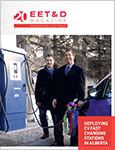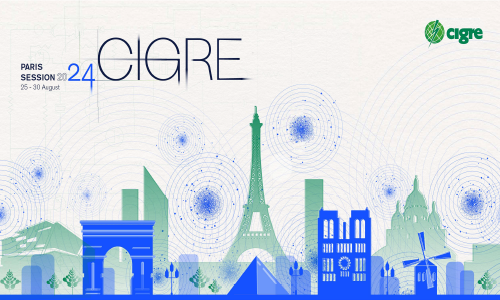Energy efficiency, demand-side management, distributed energy and the internet of things: what do energy services mean in the context of digitalization, a changing global economy and new global attitudes?
What do the various iterations of the energy services industry mean to utility professionals, energy consumers, and to the developers of the transformative technologies that are advancing toward overall connectedness?
With its roots in the conservation movement of the 1970s, energy efficiency and its equally significant but lesser known counterpart, demand-side management, now comprise an entire industry within the national energy economy.
According to the Department of Energy’s 2017 U.S. Energy and Employment Report, there are 2.2 million workers across the construction, manufacturing, wholesale trade, and professional and business service industries that spend some or all of their time working with energy-efficient technologies and services. It was one of the only areas of our economy that was growing during the Great Recession. In fact, the report projects an annual growth rate in employment of roughly nine percent.
Not included in those numbers, the U.S. Bureau of Labor Statistics finds that retail trade industries that sell and distribute ENERGY STAR® appliances and building materials (as well as non-qualifying appliances and building materials) employ approximately another three million Americans.
The job functions of those millions of Americans are changing daily; adapting to new technologies, changing behaviors, ensuring privacy, assessing risk, and marketing and communicating the tangible benefits of about energy efficiency. So what does this mean for the industry, those who work in it, and those who are served by it?
An association for energy professionals, in conjunction with a strategic marketing firm specializing in energy, conducted a “deep dive” research project to measure changes, and placed all of the developments in a proper context to see where we are as a country, where we are going in the future, and most importantly, how the utility sector can retain and grow consumer trust in an era of rapid change.
Two surveys were conducted among industry professionals and consumers, with a collective sample size just shy of 3,000 respondents.
The research project focused on four primary areas: the Internet of Things (IoT), program participation, jobs and the use of distributed energy resources.
The Internet of Things
Devices that are connected in the home to the “Internet of Things” demonstrate savings of energy and money on utility bills, but in spite of what we may intuitively believe, adoption rates of these devices are still low.
Despite all the “smart home” news in the media, only about 25 percent of the consumers surveyed said they owned at least one IoT device:
- Smart thermostat - 12 percent
- Smart speaker, (i.e. Google Home, Amazon Echo) - 7 percent
- Smart power strip - 5 percent
- Smart washing machine - 4 percent
- Smart doorbell - 2 percent
- Smart air conditioning unit (those controlled by remote devices such as a smart phone) - 1 percent
Interestingly, and counter-intuitively, IoT product owner¬ship is led by consumers in the two middle-age brackets. Those who are between the ages of 30 and 44 are most likely to own at least one Internet of Things product, and those who are between the ages of 45 and 59 are most likely to own multiple devices.
And most of these devices noticeably save energy. In fact, a fair amount of energy, when you ask the owners. Among owners of smart thermostats, 45 percent said the device had decreased energy usage. Smart power strips saved energy for 22 percent of the respondents who reported owning one. And smart room air conditioners reduced energy usage for 60 percent of those who reported owning one.
Participation in Programs
Utility-driven energy management programs are growing; although participation rates are still somewhat low, the survey found.
Only 31 percent of the consumers surveyed had participated in a utility-run energy management program. However, over the last two years, 32 percent of energy efficiency professionals reported that program participation rates had grown from three to 10 percent, and 21 percent reported that participation rates had grown by more than 10 percent. Those trends are expected to continue over the next two years.
In the survey, program sizes ranged from 140 participants to 50,000, with an average of 11,000. Customer participation rates ranged from one percent to 80 percent, with an average of 17 percent.
The survey found a counterintuitive disparity between the utility perspectives of what is important to consumers, and what consumers say is important to them. Only 18 percent of those polled on the utility side said that energy efficiency was “very important” to consumers, but 58 percent of the consumers said that energy efficiency was “very important.” This is a great example of the utility’s potentially underselling the energy savings value of a product or program.
Utilities are working to redesign programs by increasing and improving communications with customers by making it easier to participate online, improving incentives, and reaching out more through social media.
Among the top factors generating growth in programs, according to consumers:
- Improved value and incentives (61 percent)
- Improved communications between consumers and utilities (46 percent)
- Improved digital interfaces, tools and energy data (36 percent)
- Redesign with consumer friendliness in mind (29 percent)
One surprising trend is that older consumers are more likely to participate in programs. Younger people may be purchasing homes later, but the industry needs to reach out and communicate better with millennials.
Jobs in Energy Efficiency
The number of utility program jobs is increasing steadily across utility companies. On average, energy efficiency program departments have grown 20% in the past five years, according to the survey.
More than half of the respondents reported having open positions – some of which have been open for six months or longer. The hardest positions to fill, according to the respondents are those in data analytics, followed by technical support, field staff, managers and program managers.
Distributed Energy Resources
A little less than a third of all consumers reported owning one of several forms of distributed energy resources that were polled in the survey: an electric car or plug-in electric hybrid car, a rooftop solar system, a backup generator, and/or a heat pump water heater.
However, even if they hadn’t yet purchased one of these devices, interest levels are ahead of ownership rates:
- Rooftop solar Own - 4 percent; interested - 34 percent
- Backup generator Own - 13 percent; interested - 35 percent
- Electric vehicles Own - 3 percent; interested - 26 percent
- Heat pump water heater Own - 10 percent, interested - 13 percent
Today, without even looking too hard, we can see the trends identified in our survey in our daily life and activities. Changes are everywhere. The shopping center has parking spaces and charging stations for electricor hybrid vehicles. Homes have smart devices such as Amazon’s Echo or Google Home that can be used to power down heating and air conditioning systems. And that eccentric neighbor who has gone completely off the grid with a generator and/or solar panels, well, he doesn’t seem so strange anymore.
Are we, as individuals, energy-independent? Far from it. Are we on our way? The findings from this research say most definitely. While we are a long way from it, which has far-ranging implications for global economics and politics, our generation and use of fossil fuels, relationships with oil-producing nations, and job creation domestically and abroad.
It has long been said the greenest kilowatt is the one that is never used. But it’s about more than just being green. It’s about being smart economically and ecologically. For energy efficiency to truly take hold, it must make sense for the consumer. And with tremendous advances in technology, easier to use products and a strong and obvious financial incentive, it does more today than ever and shows no signs of slowing.
 John Hargrove is the president and CEO of the Association of Energy Services Professionals. He served as the chair of the Association of Energy Services Professionals’ (AESP) board from 2012 to 2013. Previously, Hargrove was the director of renewable programs at NV Energy in Nevada.
John Hargrove is the president and CEO of the Association of Energy Services Professionals. He served as the chair of the Association of Energy Services Professionals’ (AESP) board from 2012 to 2013. Previously, Hargrove was the director of renewable programs at NV Energy in Nevada.








